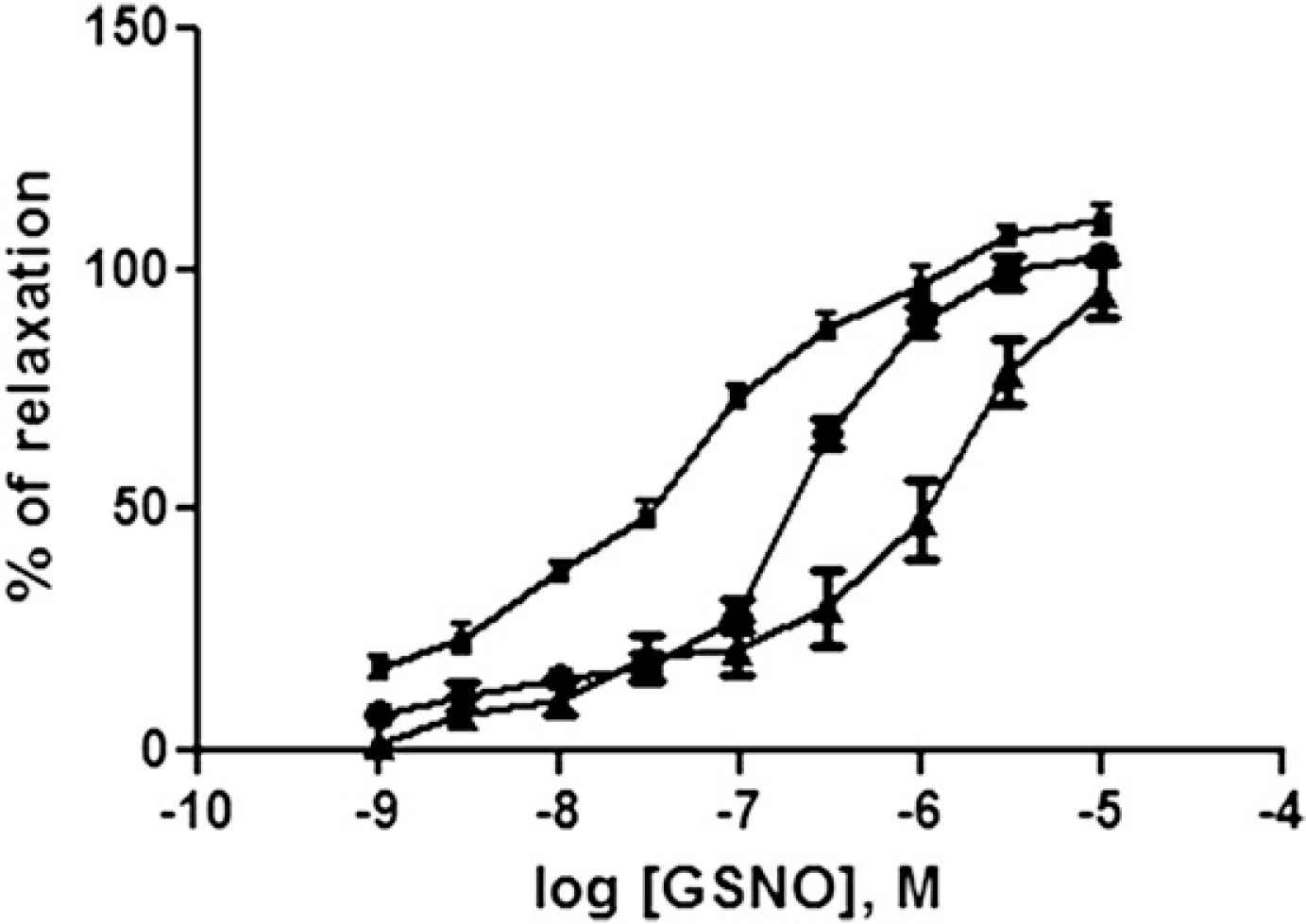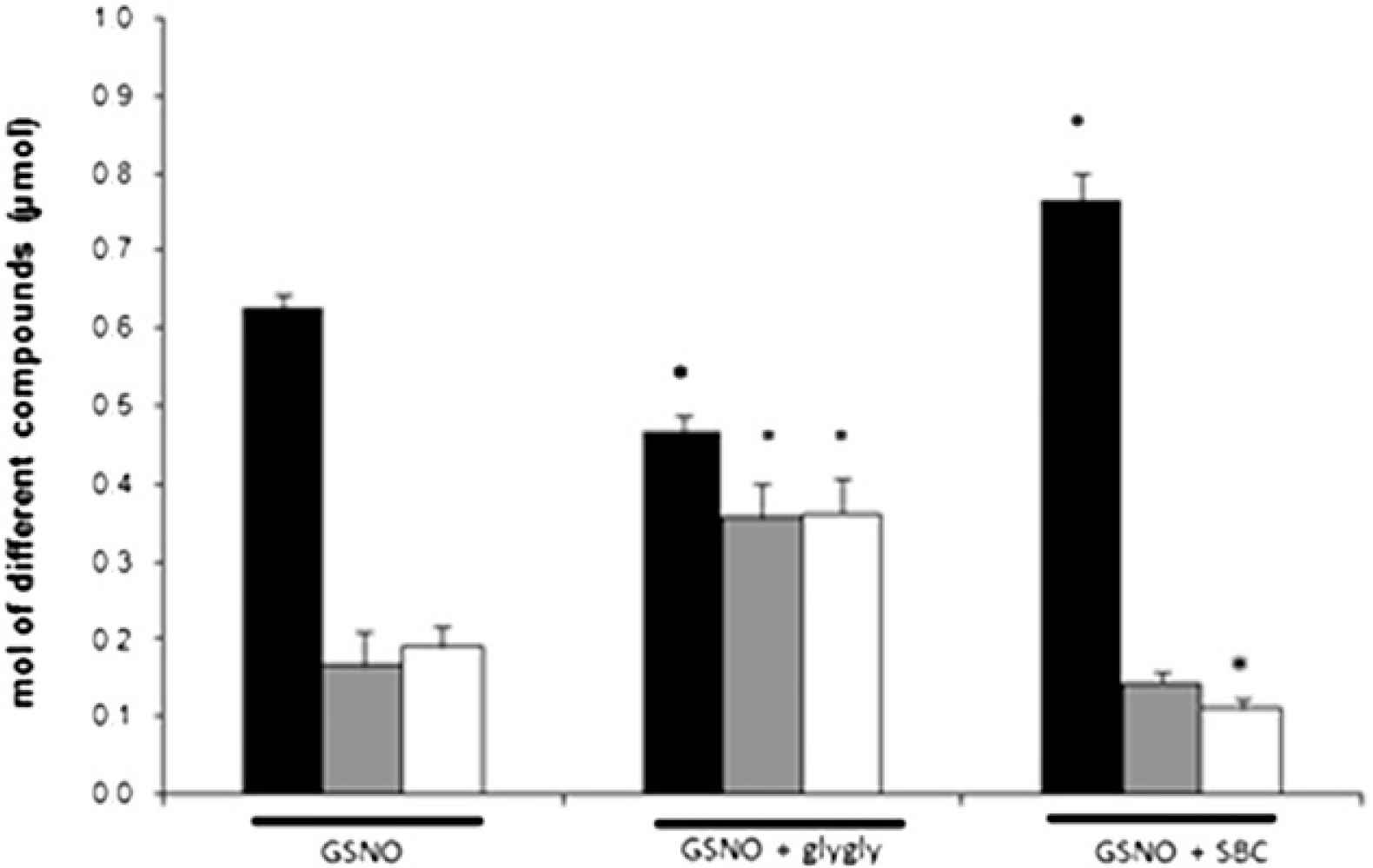7.2 IN WHICH EXTENT GAMMA-GLUTAMYLTRANSFERASE CONTRIBUTES TO THE VASORELAXANT EFFECT OF S-NITROSOGLUTATHIONE?
- DOI
- 10.1016/j.artres.2011.10.232How to use a DOI?
- Open Access
- This is an open access article distributed under the CC BY-NC license.
S-nitrosoglutathione (GSNO) exhibits higher stability than nitric oxide (•NO) and plays an important role in vasoreactivity as it serves as •NO storage and transport, and is a source for protein nitrosation. As gamma-glutamyltransferase (GGT) is involved in •NO release from GSNO, we investigated whether GGT influences the vasorelaxant effect of GSNO in the rat aorta.
We measured specific GGT activity in homogenates from thoracic aortic rings isolated from male adult Wistar rats (mean±S.E.M., 3 experiments, 0.28±0.04 nmol/min/mg proteins) and confirmed that GGT activity was mainly localized in the endothelium (histochemical reaction). The GSNO consumption in aorta homogenates (absorbance decay at 334 nm, 2.4±0.2 nmol/min/mg proteins) decreased by 57±3 % in the presence of serine borate complex (SBC, 20 mM), a competitive inhibitor of GGT, and increased by 24 ± 4 % when adding an acceptor of gamma-glutamyl residue, glycylglycine (glygly, 20 mM). The resulting release of •NO (Griess method) and nitrosation of proteins (Saville-Griess assay), were either reduced or improved with SBC and glygly, respectively (fig 1). Then, concentration-response curves to GSNO were performed in aortic rings (6–8 per experiment) precontracted with phenylephrine (1 μM) (fig 2). Half maximal effective concentration (EC50 determined by an Hill model) for GSNO (0.26±0.07 μM) increased with SBC (1.35±0.11 μM, p<0.05) and decreased with glygly (0.054±0.01 μM, p<0.05).

Amounts of remaining S-nitrosothiols (■), released •NO () and nitrosated proteins (□) after incubation of 1 mM GSNO with aorta homogenates for 2 h at 37°C of, with and without SBC (20 mM) or glygly (20 mM). Data are means ± S.E.M. of 3 experiments. (* p < 0.05 versus GSNO alone)

Concentration-response curves of S-nitrosoglutathione (GSNO) in isolated rat aortic rings. The arteries were precontracted with 1 μM phenylephrine and concentrations (10−9–10−5 M) of GSNO (●), GSNO + glygly (20 mM) (▪) and GSNO + SBC (20 mM) () were added. Data are means ± S.E.M. of 6–8 experiments.
Such involvement of GGT in the vasorelaxant effect of GSNO should be taken into consideration for further development of new therapeutics using GSNO analogues.
Cite this article
TY - JOUR AU - F. Dahboul AU - C. Perrin-Sarrado AU - K. Maguin Gate AU - A. Boudier AU - C. Gaucher-di Stasio AU - P. Liminana AU - I. Lartaud AU - A. Pompella AU - P. Leroy PY - 2011 DA - 2011/11/29 TI - 7.2 IN WHICH EXTENT GAMMA-GLUTAMYLTRANSFERASE CONTRIBUTES TO THE VASORELAXANT EFFECT OF S-NITROSOGLUTATHIONE? JO - Artery Research SP - 146 EP - 147 VL - 5 IS - 4 SN - 1876-4401 UR - https://doi.org/10.1016/j.artres.2011.10.232 DO - 10.1016/j.artres.2011.10.232 ID - Dahboul2011 ER -
